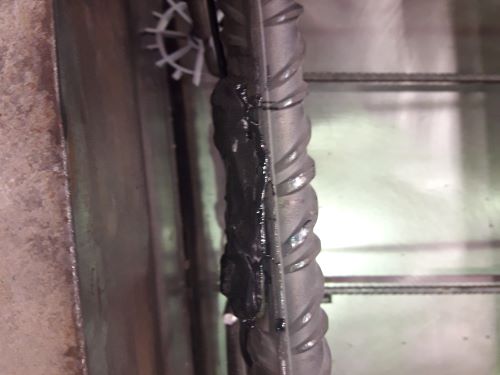With the addition of fiber optic sensors, García Díaz and his team have benefitted from the many features of the QuantumX MX1615 data acquisition system, the FS22 interrogators and the catman Easy software while conducting the tests on two concrete beams (200 mm × 300 mm and 300 mm × 500 mm, and a length of 3000 mm) with reinforcing steel.
Weldable Fiber Optic Sensors Measure the Strain of Reinforced Concrete Structure
A group of researchers from the Higher Technical School of Building of the Polytechnic University of Madrid (UPM), directed byJulián García Díaz, Nieves Navarro Cano and Edelmiro Rúa Álvarez, conducted tests designed to detect cracks in the concrete and measure the strain of the steel after applying different load steps.
In this way, they determined the exact moment at which a beam started to crack.
Problem
A group of researchers from the Polytechnic University of Madrid (UPM) were given the challenge of measuring the strains of a structure from within, not just the concrete but the steel as well. To achieve this, they needed state-of-the-art weldable fiber optic sensors and data recording technology.
Solution
The university team used a measurement solution consisting of fiber optic and temperature sensors, displacement transducers, a data acquisition (DAQ) system QuantumX MX1615, FS22 interrogators and HBM’s (now HBK’s) catman Easy software. This solution proved to be accurate, easy to connect and an ideal size for field work.
Result
The tests, carried out with the aid of HBK products, demonstrated the suitability of the fiber optic sensors for this project, resulting in a more realistic depiction of the concrete structure’s behaviour than that obtained with traditional material strength formulae.
Fiber Optic Sensors as Perfect Choice to Measure Strain From Within
The UPM team used weldable fiber optic sensors based on FBG (Fiber Bragg Grating) instead of more traditional methods, such as infrared thermography, acoustic emission, digital image correlation (DIC), ultrasonic sensors, plastic optical fibers or carbon nanotube sensors.
“As the sensors can be welded to the rebar, it was possible to measure the strains of a structure from within, not only of the concrete but also of the steel itself,” said Julián García Díaz, doctoral student in Technological Innovation in Building.
Fiber optic sensors were chosen because of their characteristics, and in particular, their longevity compared to conventional electric strain gauges, long-term signal stability in unfavourable conditions, the option to place several sensors on the same cable (multiplexing) and immunity from interference (EMI/RFI). Furthermore, the cable length does not affect the measurement process. All this translates into cost advantages and improvements in performance and accuracy.
Setup of the Measurement System
The measurement system was composed of arrays consisting of two fiber optic sensors and a temperature sensor (to compensate for the sensitivity of the fiber optic sensors), load cells connected to the 16-channel QuantumX MX1615 data acquisition system and a 20 mm potentiometer displacement transducer with an accuracy of 0.1% and compatible with the MX1615B amplifier. The data acquisition system was connected to a computer with the catman Easy software installed. The FS22 interrogators were also connected to this computer.
“Since I started the research for my doctoral thesis, I have relied on HBM, now HBK products for two reasons: the option to use weldable sensors and the commitment and professionalism of their team. During this research, they have provided a system that is accurate, easy to connect and an ideal size for field work. And, if that was not enough, the results are immediately received by the computer via the catman Easy software.”
Do you have a similar need for your business or want to know more about HBK solutions? Get in touch with us!
Fiber Optic Measurements Deliver Important Insights: Microcracks Detected
As a result, some microcracks that were invisible to the naked eye can now be detected by the fiber optics and, consequently, it should be possible to analyse the behaviour of the concrete and determine the deformation of the steel.
The tests have demonstrated that, for example, the steel strain is greater than that established in the theoretical calculations and occurs long before that indicated in previous laboratory tests.
García Díaz added that
“The results have met my expectations, as throughout the tests we have been able to achieve much more realistic behaviour of structures than that obtained with the traditional material strength formulae.”
For all these reasons, the UPM research group is planning to continue using HBK products in their future projects on structure deformation measurement.
The Customer: The UPM Structural Engineering Group
The Structural Engineering Group forms part of the Department of Mechanics of Continuous Media and Theory of Structures of the Higher School of Civil Engineering of the Polytechnic University of Madrid (UPM).
In addition to teaching basic and advanced subjects that are part of the structural engineering programme of the Higher School of Civil Engineers, this group also carries out research projects in the field of structural engineering. Furthermore, it works to promote structural engineering as a fundamental branch within civil engineering and provide specialized services to the public and private sectors.





